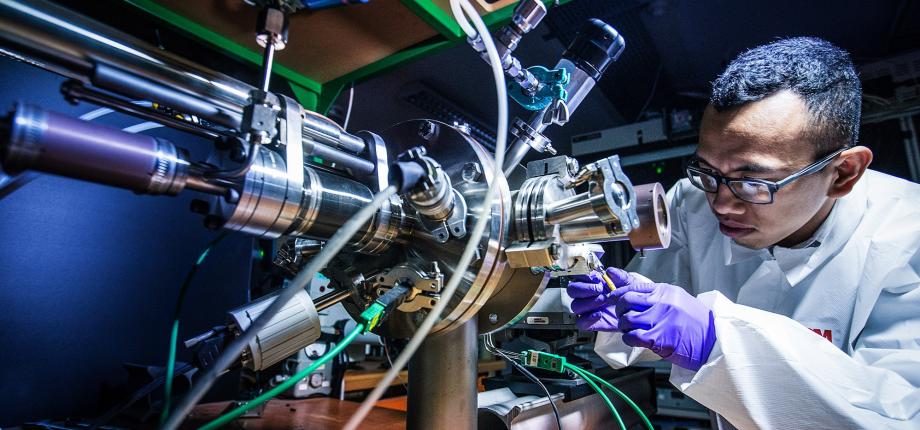Department of Physics

The field of Physics aims to understand the world around us. Researchers use the scientific method to observe, reason, experiment and innovate in order to model the laws of nature and their applications for a wide variety of phenomena. Physics also plays a central role in other disciplines since many modern technologies rely on advances stemming from fundamental research in this area. Examples include electronics, telecommunications, geolocation and medical imaging.
In 2022, Alain Aspect, CNRS Research Director Emeritus at the Institut d'Optique Graduate School (Université Paris-Saclay - CNRS) and Professor at IP Paris department of Physics, is co-recipient of the Nobel Prize in Physics. This Nobel Prize rewards his discoveries and underlines the excellence of education in Physics at IP Paris (read more).
Fundamental and applied research activities in the field of physics at the Institut Polytechnique de Paris aim to:
- produce new knowledge from fundamental research using methodologies, processes and equipment at the cutting-edge of knowledge and technology
- develop new methods and tools to test, observe and model phenomena
- take advantage of opportunities to develop innovations to benefit society
World-class research areas
- Condensed matter and materials physics
- Quantum materials and technologies
- Electronic excitations and spectroscopy
- Physics of semi-conductors
- Electrochemistry and thin films
- Physics of surfaces and interfaces
- Solid state chemistry
- Nanomaterials and innovative devices
- Glasses and fiber optics
- Defects, disorder and structure of material
- Physics of irregular systems and growth processes
- Lasers and plasma physics
- Laser-plasma electron acceleration
- Ultra-fast laser-driven X-ray sources
- Fusion plasmas, low-temperature plasmas and space plasmas
- Plasma transport and turbulence
- Relativistic plasma and high-field physics
- New plasma treatment for large-area electronics
- Optics and biophysics
- Molecular mechanisms of microbial adaptation
- Internal dynamics of biomolecules
- Nano-imaging and quantitative biology
- Advanced microscopy and tissue physiology
- Extreme-scale physics
- Experimental particle physics
- Neutrinos
- Gamma-ray astronomy
- Quark-gluon plasma
- Wakefield particle acceleration
- Applied physics
- Organic, inorganic and hybrid devices: design and characterization
- Gas and liquid sensors and constraints
- Aqueous Nano-Raman using twisted light
- Direct energy conversion
- Theoretical physics
- Condensed matter theory: Multi-body physics and topology
- String theory and cosmology
- Quantum field theory
- Dynamic systems and statistical mathematical physics
- Theory of astrophysical plasma and plasmas for thermonuclear fusion
- Medical applications
- Proton therapy
- Biomedical optics: theory and instrumentation
- Polarimetry for detecting cancer
- Ultra-short laser pulses for ophthalmology
- Laser-produced plasma for medical radiotherapy and imaging applications
Laboratories
- Theoretical Physics Center (CPHT)
- Photovoltaic Institute of Ile-de-France (IPVF)
- Leprince-Ringuet Laboratory (LLR)
- Applied Optics Laboratory (LOA)
- Optics and Biosciences Laboratory (LOB)
- Plasma Physics Laboratory (LPP)
- Irradiated Solids Laboratory (LSI)
- Laboratory for the Use of Intense Lasers (LULI)
- Physics of Interfaces and Thin Films (PICM)
- Condensed Matter Physics Laboratory (PMC)
Members of the Education and Research Departement
The research strategy for this field is implemented by researchers from Institut Polytechnique de Paris schools. They work together to conduct world-class research at state-of-the-art facilities.















